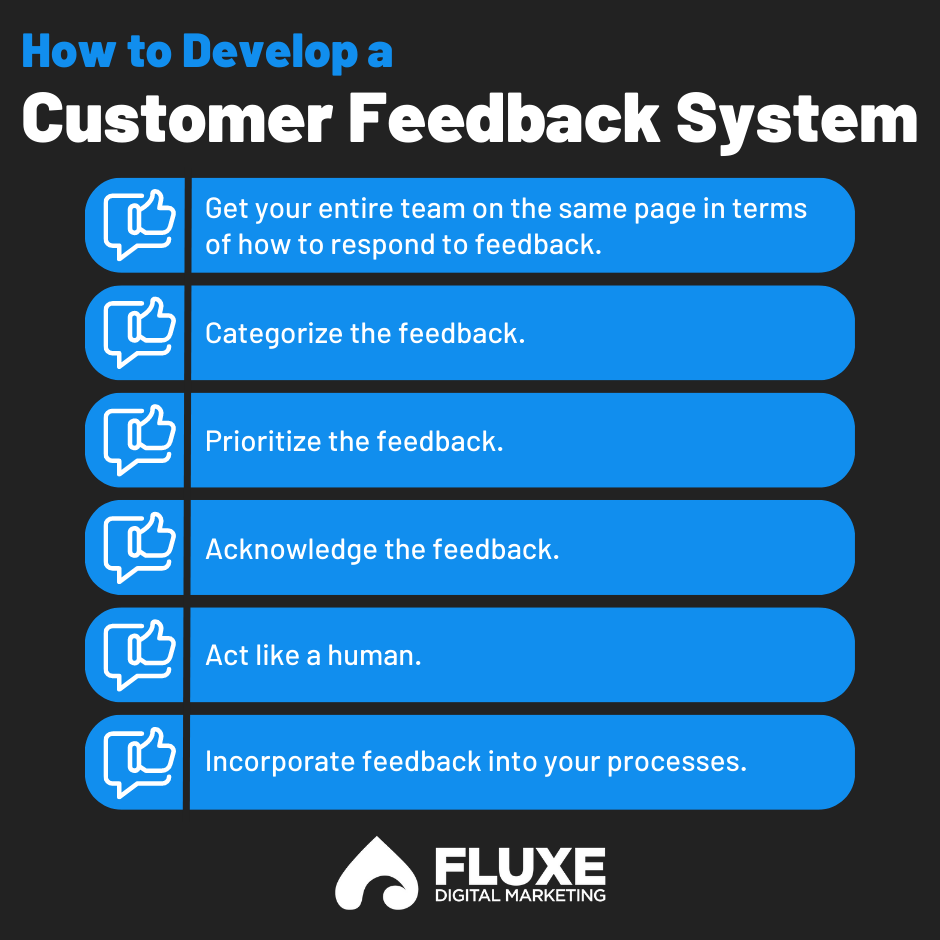“I don’t agree with this blog post.”
“This video was confusing. Can you explain it?”
“I loved your newsletter. Can you expand on it?”
It’s easy to let your fight-or-flight instinct take over when you hear feedback from your customers you aren’t expecting. Positive feedback is reassuring and feels great.
But what happens when it catches you off guard?
Anyone who builds a large brand is going to evoke reactions from their audience. Take Elon Musk for example. If you stopped 50 people in the street to ask what they think of him, you’d get a wide range of mixed reactions.
The point is, you don’t get to choose how your audience reacts to your content. Instead, focus on what you can control. Develop a customer feedback system, and let it influence your content marketing strategy. Here’s how.
Why You Need a Customer Feedback System
Feedback comes in countless forms, from a passing comment to a written email to a pitchfork-wielding mob standing at your door.
As such, responding to feedback can be time-consuming and uncomfortable. A documented step-by-step customer feedback system helps you navigate those difficult conversations and decide what concerns are worth acting on.

What Does a Customer Feedback System Look Like?
Here’s what your customer feedback system may look like:
- Get your entire team on the same page in terms of how to respond to feedback. And I mean everyone. Document your process, including what channels and people the feedback goes through, and make sure everyone can access it.
- Categorize the feedback. Begin this step with the end in mind. Instead of asking “What metrics should we measure?” ask “What are our goals? Reducing churn? Increasing referrals? What metrics have a direct impact on these?” Make sure everyone on your team understands each category. You never want an employee to say, “I got some feedback, but I don’t remember which document to add it to!” It’ll die on the vine.
- Prioritize the feedback. Start with the biggest fires that create the most unhappy customers and work your way down.
- Acknowledge the feedback. Even a simple “thank you” goes a long way. If the feedback is negative, wait a day or so to let the customer cool down. Then take the conversation offline. Follow up with the customer one on one, either in person or over the phone.
- Act like a human. Don’t be afraid to show some personality. Remind your customer that your company is run by real people who try their best every day.
- Incorporate feedback into your processes. Ask yourself, “Will this concern come up again? If so, what do we need to change in our processes to make sure it doesn’t?”
When to Incorporate Feedback — And When to Let It Lie
Not all feedback is necessarily useful or actionable (see: the pitchfork-wielding mob), and there’s a massive difference between feedback and a complaint.
A complaint is emotionally charged and misinformed, and usually comes from a customer who woke up on the wrong side of the bed and is using you as a punching bag. Complaints still need to be dealt with professionally, but they’re usually caused by miscommunication or outside events that aren’t within your control.
Feedback, on the other hand, is actionable, and usually comes from a customer who cares enough about your brand to speak up. It identifies holes in your processes, and it leads to a more personalized and effective content marketing strategy.
The Role of Feedback in Content Marketing
While you’re planning your content output for the next two, six, or even 12 months, take the time to learn what your audience needs from you.
This is where a documented customer feedback management system comes in handy. Read through your feedback — the replies you’ve received on social media, the comments left on your blog posts, and the questions or concerns your front-end staff get most often. If your front-end staff hears the same question or concern from two or more customers, chances are many other customers — who are too shy to speak up — have the same concern.
Knowing what your customers need from you helps you come up with relevant, engaging content ideas that fill gaps in their knowledge — and motivate them to become better brand ambassadors.
How Team Alignment Impacts Your Customer Engagement Strategy
Let’s say one of your employees recently published a customer-facing article, video, or social media post you disagree with. Customers are flocking to you, referencing this employee’s content and assuming you share the same beliefs.
What do you do?
At the end of the day, you respect everyone on your team; that’s why they’re on your team in the first place. Each member of your staff has a different viewpoint and expertise in a different area, and they all complete each other. “Different” isn’t synonymous with “bad.”
You and your employees won’t share the same views on everything, but all your paths need to run parallel. Don’t throw that employee under the bus for sharing their individual perspective with your clients. Instead, use the situation as an opportunity to align internally.
Remind your employees that what the customer or patient recalls from a publication isn’t necessarily accurate unless they literally have the publication pulled up on their phone. Often, the customer is referencing a clouded memory.
Turn this into a reeducation opportunity for the customer. Remind them that each member of your staff is an individual with their own values and beliefs, and while you may not agree with each other all the time, you all support each other.
The worst thing you can do in this situation is have the employee delete the publication with no client-facing explanation. The only way you can fail is by giving up.

Embracing Growth as a Feedback Tool: Final Thoughts
Not every customer who identifies issues with your processes is a “Karen.” In fact, external feedback can be just as valuable as internal feedback. Your customers may love you dearly, but they’re not wearing the same rose-colored glasses you and your team are.
Listen to what customers need from you and use your customer feedback system to address their concerns. You’ll end up with a more customer-friendly company and a more effective content marketing strategy.



